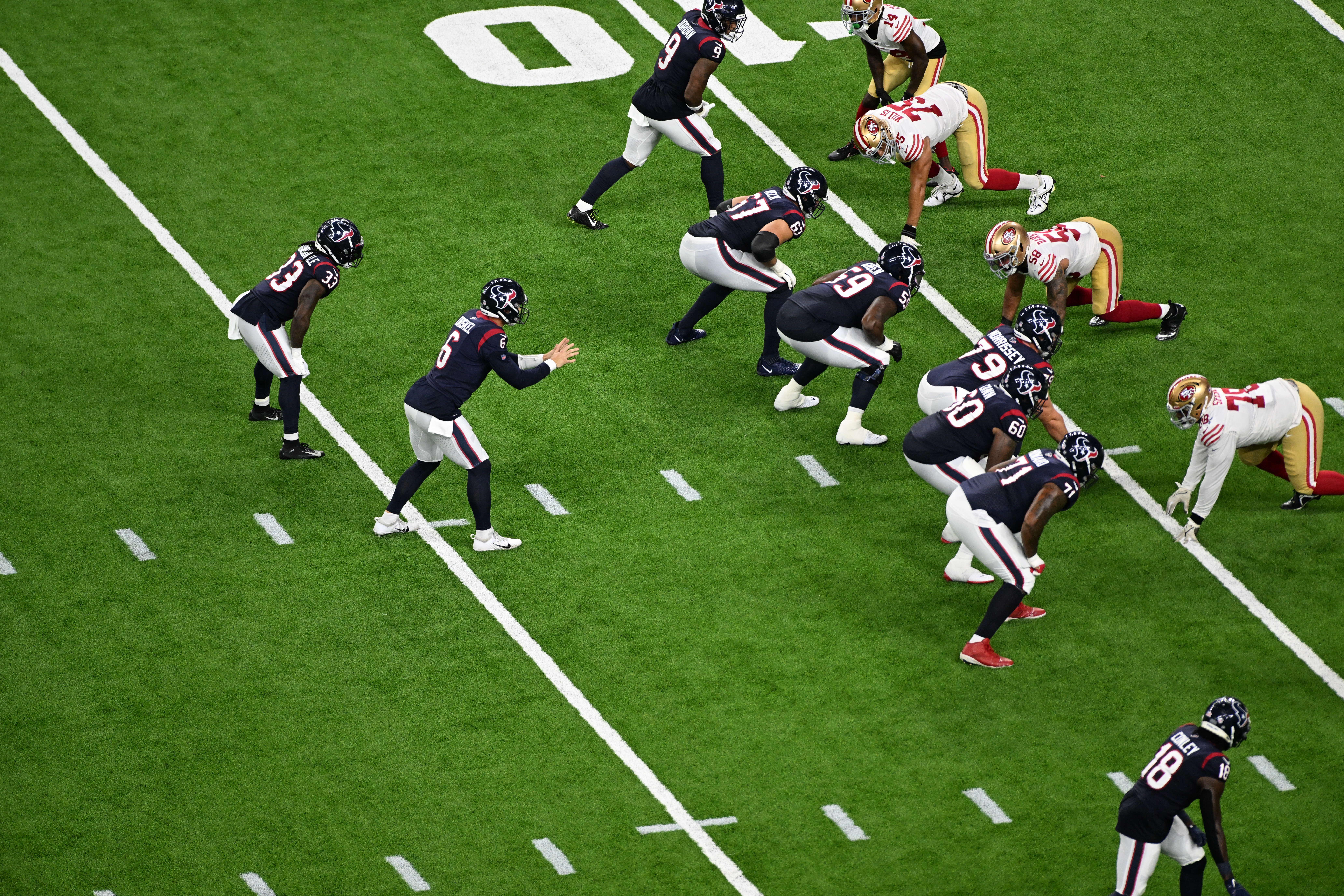NOTE: Following Hudl’s acquisition of Statsbomb, its football platform is now called Hudl IQ. Learn more about the acquisition here.
One of the more interesting points of comparison between NFL and FBS football is offensive personnel usage. From the standpoint of overall league profile but also the range of diversity within each league, the choices in how to attack defenses represented by which packages tend to see the field most can tell us a lot about the governing philosophies of each level of play.
The examination of personnel packages encompasses a wealth of different questions, such as:
- In both leagues, the most common choice is 11 personnel, but to what extent is it the most popular personnel grouping? Is the preference for 11-personnel stronger in the NFL or in college football?
- To what extent do college offenses respond to the wider hash marks, among other varying gameplay factors, by spreading defenses out with a 10-personnel or Empty grouping?
- Does the broader stylistic diversity of college offenses featuring everything from triple-option to air raid schemes show up in personnel choices?
- Do individual teams feature a broader array of personnel packages in the NFL than in college play?
Looking at Hudl IQ data from the 2022-23 season can help us answer those and more.
Offensive Personnel Distribution
Across both levels of play, 11 personnel is king, making up well over half of offensive snaps. There are some differences from there, however:

For the sake of this analysis, “22” includes all personnel groupings with fewer than 2 WRs and 3 TEs on the field while “Empty” includes all snaps with zero RBs on the field.
Even though 11 personnel is the most popular at both levels, it is even more “standard” in NFL play than it is in college, hinting at the broader schematic diversity across FBS. The chart below summarizes the differences between package usage between the leagues:

College football offenses spread it out at a much higher rate than NFL offenses, using groups without both running backs and tight ends (10, 20 and empty) more than 3 times as frequently (13.3% to 4.2% combined).
If FBS is more spread, then it stands to reason the NFL uses “bigger” personnel groupings and formations more often. These packages are all more common in the NFL by substantial amounts, with a combined 16.6% of NFL snaps featuring 22, 21 or 13 personnel compared to 9.6% of FBS snaps.
Diversity In Personnel Usage
Do individual NFL teams tend to use a wider array of personnel packages than do their FBS counterparts, or is the reverse true? Teams that are more personnel diverse would use their most common grouping a lower percentage of the time than teams that largely live in the same personnel grouping all season long. So what are those most common groupings? First, the chart below shows the distribution of top personnel groupings by team across the NFL and FBS in 2022-23:

Of the 32 NFL offenses, 31 favored 11-personnel above all else, the lone exception being the run-heavy Baltimore Ravens, who used 22-personnel as a base package last season.
By comparison five different personnel groupings were the “top” personnel used by at least one FBS offense last season with 14 schools operating out of something other than 11-personnel most frequently. Much like the Ravens, most of those offenses are considered to have a unique style of play, as Navy, Air Force, and Army are triple-option offenses while teams like Mississippi State and Washington State love to air it out from spread formations.
Another way to examine trends in personnel usage is to compare the percentage of plays encompassed by a teams’ top personnel groupings across the two leagues. The more personnel diverse a team is, the lower the percentage of their total plays will be run from their top few personnel groupings. This data does not align with the claim of more stylistical diversity in FBS. Teams use their most common grouping slightly more in the NFL, but this gap vanishes once we consider the top two groupings for each team.

So to summarize, college offenses do spread it out more than the do in NFL while featuring a wider array of personnel packages across teams, in both FBS and NFL play, teams tend to stick to their top few groupings to roughly the same degree.
